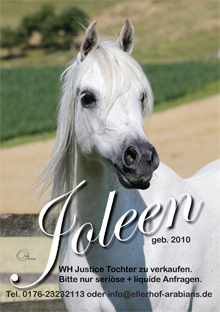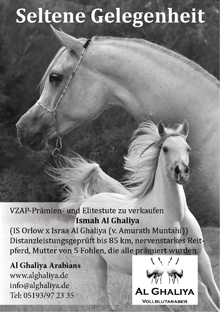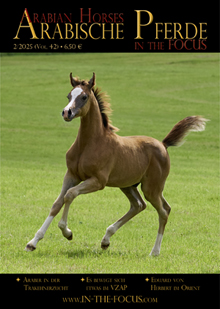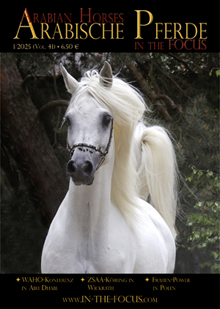Warmblood fragile foal syndrome (WFFS) has become a horror in recent years in Warmblood breeding. But because similar symptoms to WFFS have also been found in (historic) Arabian horses, research has been conducted whether or not Bairaktar, who had a significant influence on Warmblood breeding, was the origin of WFFS.
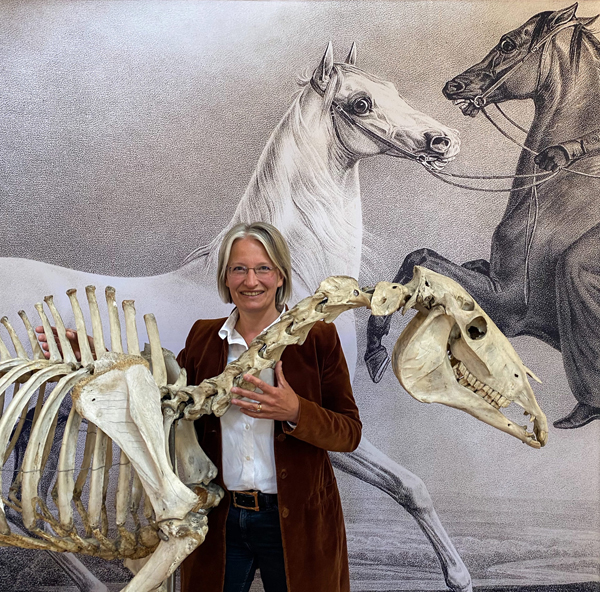
Photo: Christian von Holst (www.christianvonholst.de)
Warmblood fragile foal syndrome (WFFS) is a hereditary disease, an autosomal recessive disorder caused by a single nucleotide variant, that causes an incurable connective tissue disorder. It can be detected immediately after birth, when the foal usually gives a somewhat weak impression, but still seems to be okay with an existing sucking reflex. However, due to the genetic defect, the skin (epidermis) is not firmly connected to the lower tissues, which means that it may tear off even with only slight contact and stress, such as when trying to get up. No need to say, that the foals cannot survive.
Similar disease in 1855
These symptoms sounded very much like a disease, which was first described in 1855 by Prof. Adolph Rueff at Hohenheim. In the years between 1841 and 1853, a „peculiar skin disease was observed in several foals born at the Royal Stud Weil in Württemberg: The foals were mostly born dead, or died at birth or soon after, and all displayed the same congenital malformations of the skin and the hooves. The skin, especially on the legs, but also on the back, the neck, and the face, was usually hairless, there were cysts filled with fluid, the upper skin detached from the layer beneath, the hooves shrank before birth and fell off in the womb or shortly after birth, and the oral mucosa was also affected.”
The rest of this article is only visible to Online Subscribers.
Please log-in, if you are already an Online-Subscriber: Login-PagePlease go to the Shop, if you want to become an Online-Subscriber: Shop-page
The one-year Online Subscription is available at 20 €
-------------------------------------------------------------------------------------------------
Quellen
Reiter, S.; Wallner, B.; Brem, G.; Haring, E.; Hoelzle, L.; Stefaniuk-Szmukier, M.; Długosz, B.; Piórkowska, K.; Ropka-Molik, K.; Malvick, J.; Penedo, M.C.T.; Bellone, R.R. Distribution of the Warmblood Fragile Foal Syndrome Type 1 Mutation (PLOD1 c.2032G>A) in Different Horse Breeds from Europe and the United States. Genes 2020, 11, 1518.
Rueff, A.G. Eigenthümliche Krankheit neugeborener Fohlen (a peculiar disease of newborn foals). In Jahrbuch für Pferdezucht; Verlag Voigt: Weimar, Germany, 1855; pp. 267–277.
Tönjes, Jan: Der Uropa XXL des Weltsports, St. Georg, 4/2014, pp. 28-47.








